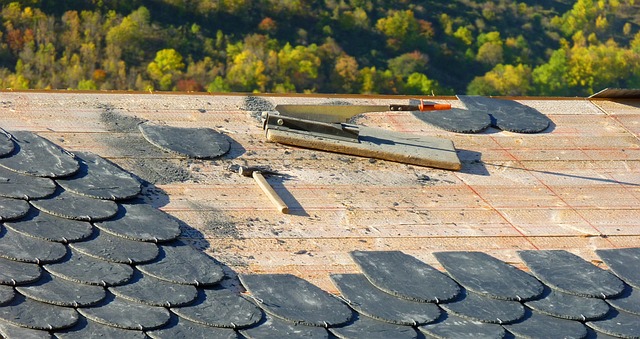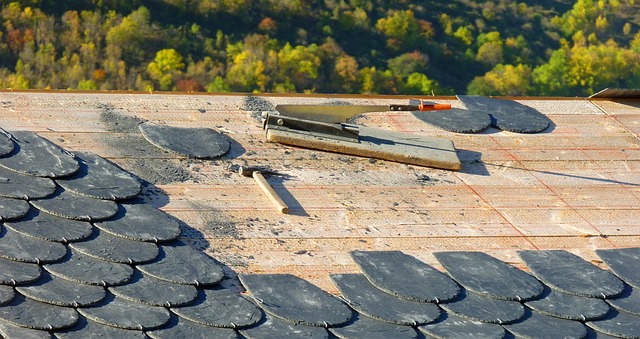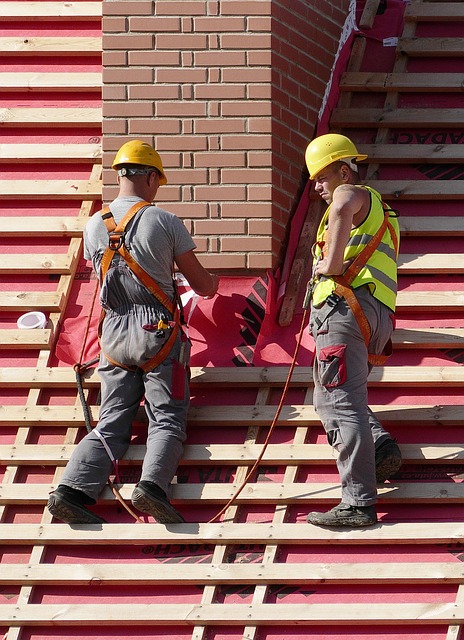Storm damage can cause significant roof issues, including missing or damaged shingles and structural compromise. Homeowners should immediately assess their roofs, contact roofers for expert assessment, and make temporary repairs to prevent water intrusion. Common repairs involve replacing shingles and inspecting rafters for damage. Proactive measures like impact-resistant materials and proper attic ventilation reduce storm damage risks. Regular inspections by roofers are crucial for preventing costly, future repairs.
After a storm, your roof may bear the brunt of damage, from missing shingles to structural compromise. Understanding common types of storm damage and immediate steps to take after a storm is crucial. This guide walks you through assessing and securing your roof, common repairs for various damage types, and preventive measures to fortify your home against future storms, all with insights from experienced roofers.
- Understanding Storm Damage to Roofs
- Immediate Steps After a Storm: Assessing and Securing Your Roof
- Common Repairs for Different Types of Storm Damage
- Preventive Measures: Strengthening Your Roof Against Future Storms
Understanding Storm Damage to Roofs

Storm damage can wreak havoc on a home’s roof, leaving it vulnerable and in need of immediate attention from a qualified roofer. Common issues include missing or damaged shingles, which not only compromise the aesthetic appeal but also expose the underlying structure to the elements. Strong winds can rip off entire sections of roofing, causing significant structural compromise if left unaddressed.
Understanding the extent of storm damage is crucial for homeowners and roofers alike. A roofer must assess the situation, looking for any signs of water intrusion, weakened trusses or beams, and loose underlayment. Regular maintenance before and after storms can help mitigate these issues, but sometimes the damage is subtle and requires expert eyes to detect.
Immediate Steps After a Storm: Assessing and Securing Your Roof

After a storm, the first steps for any homeowner should be assessing and securing their roof. Start by walking around your property to inspect for damage, particularly focusing on the roofline and shingles. Look for missing or damaged shingles, as well as any signs of structural compromise like loose gutters or dented flashing. If you notice significant damage, it’s crucial to contact a roofer right away; waiting can lead to further complications.
Gathering essential supplies like tarps, buckets, and rope, temporarily cover exposed areas to prevent water intrusion. This immediate action will shield your home from potential leaks until a professional roofer can conduct thorough repairs. Remember, a quick assessment and temporary fix are vital to mitigating storm damage’s impact on your property.
Common Repairs for Different Types of Storm Damage

When it comes to storm damage, different types of weather events can cause distinct issues for your home’s roof and structure. Here are some common repairs that a roofer may need to address after severe storms:
For roofs suffering from shingle loss or damage, a roofer will typically replace missing or severely damaged shingles. This is crucial to prevent further water intrusion and potential structural compromise. They might use new shingles that match the original style and colour for a seamless repair. In cases of major storms, multiple layers of shingles may need to be replaced, ensuring a strong and secure roof again. Additionally, roofer professionals inspect for structural damage, especially to the rafters and trusses. Cracks or warping in these elements can compromise the entire structure, requiring repairs or even replacement.
Preventive Measures: Strengthening Your Roof Against Future Storms

After a storm, many homeowners are left with significant roof damage, from missing shingles to structural instability. However, taking proactive steps before severe weather hits can greatly reduce these risks. A roofer can assess and implement various preventive measures to fortify your roof against future storms.
One effective strategy is installing impact-resistant roofing materials, such as high-quality shingles or metal panels, which are designed to withstand intense winds and flying debris. Additionally, ensuring proper ventilation in the attic space helps regulate temperature and reduce structural stress during storms. Regular inspections and maintenance by a professional roofer can also identify weak spots and potential issues before they escalate into costly repairs.
After navigating the chaos of a storm, understanding the extent of roof damage and taking prompt action is crucial. This guide has outlined essential steps for roofer professionals and homeowners alike, from assessing immediate risks to implementing long-lasting solutions. By addressing issues like shingle loss, structural compromises, and more, you not only ensure a safer, more secure home but also invest in preventive measures that safeguard against future storms. Remember, the right repair and reinforcement techniques can make all the difference in protecting your property’s most vital component – its roof.
